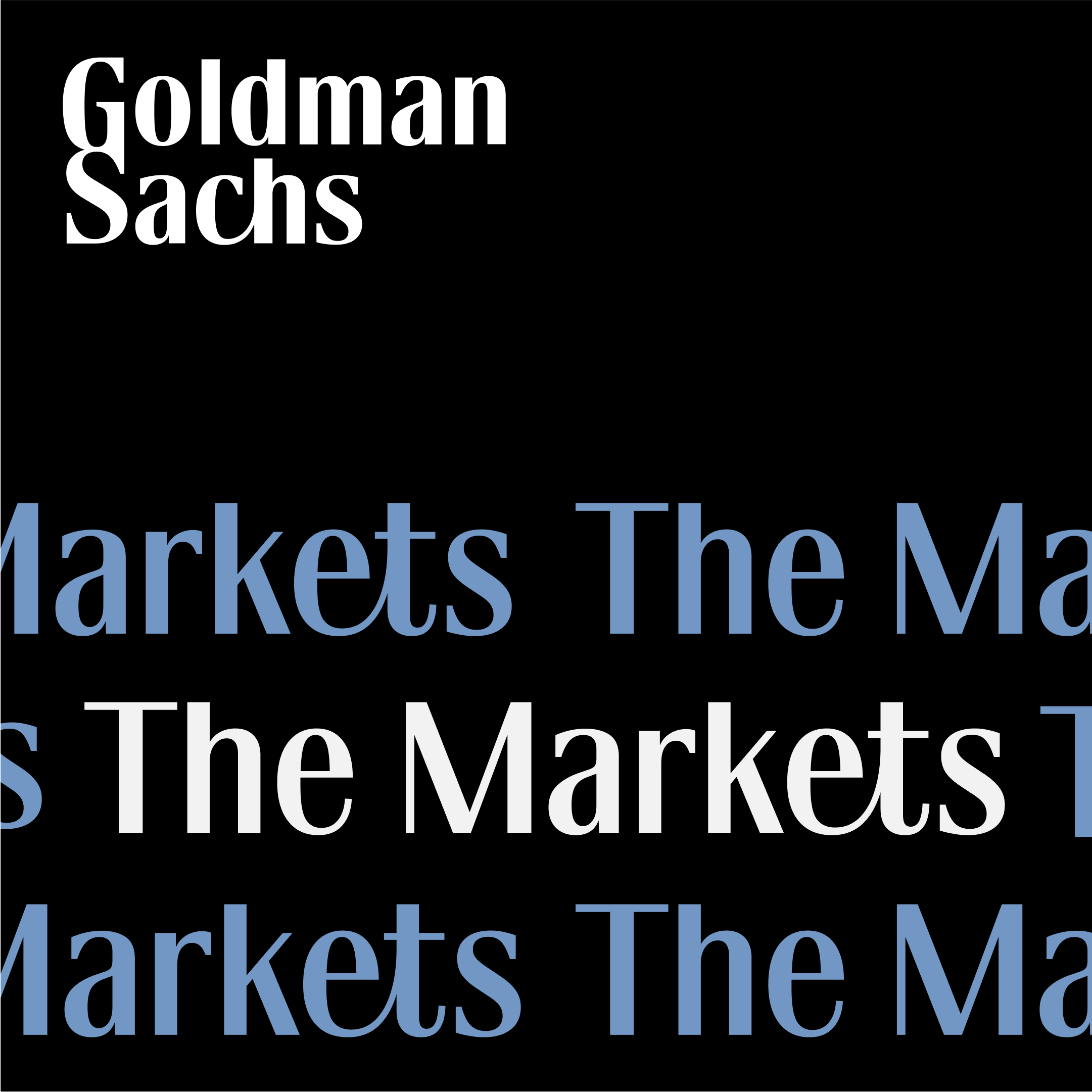A comprehensive analysis of how inflation data intersects with US tariffs and where investors may find meaningful opportunities in the current environment, drawing on insights from Gurpreet Garewal, Macro Strategist with Goldman Sachs Asset Management, in conversation with Chris Hussey. Recorded on July 16, 2025, the discussion explores the nuanced linkages between price dynamics, tariff policy, and investment strategy in a rapidly evolving global landscape.
Inflation Data, Tariffs, and the Real Economy
Inflation data serves as a critical barometer for understanding the real-world impact of tariff policy, offering a window into how price pressures propagate through consumer markets, production costs, and broader macroeconomic conditions. When tariffs are imposed or adjusted, the most immediate channel of influence is typically the cost of imported inputs. These price changes can filter through supply chains, affecting the cost structures of firms that rely on foreign goods, components, or finished products. The degree of pass-through to consumer prices depends on multiple factors, including the elasticity of demand for affected goods, the degree of competition within markets, and the extent to which firms can adjust their pricing strategies or find alternate suppliers.
The tariff pass-through to inflation is neither uniform nor immediate. In some sectors, tariffs may translate quickly into higher consumer prices, amplifying headline inflation in the short run. In others, firms may absorb some costs to protect market share, delay price changes, or employ productivity measures to offset higher input costs. Over time, the composition of inflation can shift as tariff-related costs emerge in durable goods, automotive components, electronics, household appliances, and other tradables. Importantly, the data often reveal a dispersion across sectors: some categories demonstrate a pronounced price response, while others show only muted effects because of competitive dynamics, domestic substitution, or the use of alternative supply routes.
Core inflation metrics—excluding energy and food—provide a lens to assess the longer-term persistence of tariff-driven price pressures. While energy prices can amplify inflation volatility in the near term, the core measures help isolate underlying pricing power within the economy. Yet even core indicators are influenced by tariff dynamics insofar as tradables permeate broad price indices through substitution effects and the iteration of input costs across firms and industries. Producers may respond to tariff-induced cost shocks with a mix of price increases, efficiency-driven cost reductions, and adjustments to supply chains, which can dampen or prolong inflationary implications depending on the pace and effectiveness of those responses.
Policy expectations react to inflation data as well as the tariff narrative. If inflation measures converge toward the upper end of central bank targets, markets anticipate tighter monetary policy, higher real rates, and a steeper yield curve. Conversely, softer inflation readings can reinforce the case for a more accommodative stance or slower rate hikes. In this framework, tariffs contribute seasoning to the inflation outlook, complicating forecasts and compelling investors to disentangle tariff-driven price signals from other drivers such as wage dynamics, global demand shifts, energy markets, and the evolving balance of supply and demand in key goods sectors.
The inflation data also interact with consumer behavior and sentiment. When households perceive higher prices for essential tradables linked to tariffs, discretionary spending patterns may adjust, potentially slowing consumer activity in non-essential categories. Yet consumer resilience and household balance sheets can offset some of these effects if wage growth sustains purchasing power or if savings accumulated during earlier pandemic phases cushion the impact. In the latest data sets, analysts observe nuanced patterns: modest headline inflation readings in some months, offset by pockets of elevated inflation in particular sectors sensitive to import costs, such as consumer electronics, autos, and certain manufactured goods.
Beyond the domestic frame, global price trends and foreign exchange movements complicate the inflation-tariff equation. Exchange rate shifts can either magnify or mitigate tariff pass-through, depending on whether a stronger or weaker domestic currency makes imports cheaper or more expensive. Commodity prices, particularly for metals and energy, can amplify tariff effects if tariff adjustments influence production costs for globally integrated industries. The synthesis of these forces—tariffs, exchange rates, global demand, and commodity cycles—helps explain why inflation dynamics do not follow a simple, linear path after tariff policy changes.
From an investment perspective, inflation data in the tariff context underscores the importance of scenario analysis. Investors examine a spectrum of outcomes, ranging from tariff intensification and broader protectionist moves to periods of policy stabilization and gradual normalization. Each scenario carries distinct implications for interest rates, real yields, and the relative attractiveness of different asset classes. The discussion highlights the need for continuous monitoring of sector-specific price pressures, as some segments may experience persistent pass-through while others revert to more subdued inflation trajectories as supply chains adapt and replacement suppliers mature.
In sum, inflation data provides a finely grained map of how tariff-induced cost shocks propagate through the economy. It reveals sectoral heterogeneity, interaction with exchange rates and commodity markets, and the evolving price-setting behavior of firms. The upshot for investors is clear: a nuanced understanding of how tariffs influence inflation—beyond headline numbers to the underlying drivers and channels—enables more informed asset allocation, risk management, and tactical positioning within a complex macro environment.
Tariffs, Policy, and Economic Dynamics: Historical Context and Forward Look
Tariffs operate at the intersection of economic policy and global trade, shaping incentives for production, investment, and competitive dynamics across industries. The discussion between Gurpreet Garewal and Chris Hussey emphasizes that tariff policy is not a one-off event but part of a broader, evolving policy environment that interacts with exchange rates, capital flows, and domestic political economy. A comprehensive view requires both historical perspective and forward-looking analysis to reveal how tariffs recalibrate economic activity over time.
Historically, tariff regimes have produced a mix of short-term distortions and longer-term structural adjustments. In the near term, tariffs can raise costs for importers and manufacturers, prompting price changes, substitutions, and inventory management adjustments. Firms may accelerate the reconfiguration of supply chains toward regions offering more favorable cost structures or more reliable political environments. Over the longer horizon, tariffs can accelerate reshoring or nearshoring trends as firms seek to reduce exposure to policy risk and supply chain fragilities. These shifts can influence capital expenditure, automation adoption, and the geography of manufacturing activity, with tangible implications for regional employment, wage dynamics, and productivity.
The policy backdrop matters deeply for inflation dynamics and investment decisions. Tariffs interact with monetary policy by altering the price environment in which central banks set policy rates. If tariff-driven price pressures persist, central banks may tighten further to guard inflation targets, which in turn affects real rates, borrowing costs, and investment incentives. Conversely, if tariff effects prove transitory or sector-specific, the macro policy response may be more nuanced, with policymakers balancing inflation risks against growth considerations. In this context, the inflation data becomes a critical input into policy discourse, shaping expectations about future rate paths and asset valuations.
From a sectoral lens, tariffs tend to have uneven outcomes across industries. Sectors with heavy import dependence or complex global supply chains—such as electronics, automotive, machinery, and consumer durable goods—are typically more sensitive to tariff shocks. In contrast, sectors with robust domestic production bases or strong pricing power may absorb some costs without a commensurate impact on demand. The discussion highlights that investors should pay particular attention to sector-specific inflation signals, supply chain resilience indicators, and the ability of firms to pass through higher costs to customers without eroding demand.
Policy credibility and political economy also color tariff dynamics. Tariff decisions reflect a balance of strategic objectives, domestic political pressures, and international negotiation contexts. As policies change, firms adjust their investment plans accordingly, and capital markets price in the anticipated policy trajectory. The conversation notes the importance of understanding not just the tariff levels but also the expected glide path—how quickly tariff structures may be rolled back, restructured, or layered with exemptions as trade negotiations progress or stall.
In the current environment, investors are navigating a tariff landscape that is less about a single policy shock and more about a sequence of policy calibrations, each with potential knock-on effects for inflation, growth, and investment opportunities. The insights from Garewal and Hussey emphasize that a disciplined approach to evaluating tariff impacts involves integrating price dynamics with policy expectations, global supply chain positioning, and sectoral fundamentals. This approach helps distinguish enduring structural shifts from episodic, policy-driven impulses, enabling more robust asset allocation and risk management.
Forward-looking implications suggest a continued emphasis on resilience and adaptability in investment portfolios. Firms that can withstand tariff-related cost pressures through pricing power, efficiency gains, or diversified supply sources may outperform those with concentrated exposure to a narrow set of import-dependent inputs. At the same time, the reconfiguration of global supply chains—driven in part by tariff considerations—could create opportunities in regions and sectors positioned to benefit from nearshoring, automation, and the expansion of domestic manufacturing capacity. For investors, this translates into a broad theme set: diversifying sources of supply, embracing productivity-enhancing technologies, and prioritizing companies with durable competitive advantages that can navigate a tariff-influenced pricing environment.
The practical takeaway from the discussion is the need for a dynamic framework that evolves with tariff policy and inflation data. Investors should monitor sectoral price signals, policy guidance, and macro fundamentals in real time, adjusting exposures as the path of tariffs becomes clearer. The integration of macro insights with granular sector analysis can yield more resilient strategies and better risk-adjusted returns in markets shaped by tariff-induced price pressures and policy shifts.
Subsection: Sectoral Sensitivities and Policy Signals
Tariffs tend to reveal their sectoral fingerprints most clearly in late-cycle price dynamics, investment cycles, and capex allocation patterns. For sectors with high import content, tariff shocks may lead to more pronounced cost pressures that manifest in consumer prices and profit margins. Those sectors often respond by accelerating supply chain diversification, seeking alternative suppliers in friendlier jurisdictions, or increasing investment in automation to reduce labor and material costs. In contrast, sectors with robust pricing power or extensive domestic manufacturing capabilities may experience more muted price transmission, maintaining margins even as input costs rise.
Policy signals also play a crucial role in shaping sectoral expectations. If tariff policy is interpreted as a temporary episode, investors may anticipate rapid detonation or rollback of tariffs, resulting in shorter-lived price effects. If tariffs are perceived as a long-term strategic tool, market participants may price in longer-lasting adjustments to supply chains, capital investment plans, and regional economic dynamics. The discussion underscores that these signals are often nuanced and contingent on political developments, international diplomacy, and evolving trade agreements, making it essential for investors to maintain a flexible, scenario-based approach.
In practice, investors can translate these insights into tactical tilts and strategic hedges. For example, sectors likely to experience sustained pass-through may warrant modest overweight positions in equities with strong pricing power, or allocation to inflation-linked fixed income to preserve real returns. Conversely, areas with high sensitivity to policy shifts but limited pricing resilience could benefit from hedging strategies, diversified global exposure, and exposure to assets less correlated with tariff-driven price movement. The overarching aim is to balance exposure to policy-driven inflation risk with opportunities that emerge from structural shifts in global trade and production networks.
Investment Opportunities in a Tariff-Adjusted Landscape
The conversation between Gurpreet Garewal and Chris Hussey points to a broad set of opportunities for investors who understand how tariffs reshape pricing, demand, and corporate strategy. The core idea is to identify asset classes, sectors, and markets that can weather tariff turbulence while capturing the upside from structural changes in trade and production. The following sections outline a comprehensive framework for capitalizing on these dynamics, with practical guidance on implementation, risk management, and the integration of macro and micro insights.
Economic Gravity and Diversified Income Streams
Tariffs influence inflation and growth trajectories in ways that can alter expected returns across asset classes. A diversified income framework that blends equities, fixed income, and real assets can help investors navigate tariff-driven volatility while preserving long-run growth. In equities, emphasis on companies demonstrating pricing discipline, resilient demand, and robust balance sheets can provide protection against margin compression. In fixed income, inflation-protected securities and actively managed duration strategies can help preserve real yields in an environment where policy rates adjust to inflation signals. Real assets, including infrastructure and commodities with strategic importance to supply chains, may offer inflation hedging properties and potential upside from domestic investment cycles.
Investors in this framework should also consider sectoral rotation based on tariff exposure. Sectors with strong domestic demand or those less sensitive to import cost pressures—such as healthcare services, utilities, and certain consumer staples—may offer stability in the face of tariff-induced inflation. Conversely, sectors with pronounced import dependence or exposure to global supply chains may present cyclical opportunities as shifts toward reshoring or diversification materialize. A well-constructed portfolio balances these dynamics, smoothing risk while enabling participation in the structural tailwinds associated with tariff policy.
Equities: Sector and Factor Strategies
Within equities, the tariff narrative invites a careful reassessment of sector bets and factor tilts. Companies with premium pricing power, diversified product lines, and resilient cash flows are better positioned to withstand tariff shocks. These firms can maintain margins through pricing, efficiency gains, or product differentiation, supporting higher earnings resilience in the face of rising input costs. Quality-focused factors—such as profitability, return on invested capital, and balance sheet strength—can serve as ballast during episodes of tariff-driven volatility.
Another avenue is thematic exposure to structural shifts triggered by tariffs. Nearshoring, reshoring, and the diversification of supply chains create opportunities for investors to target economies and regions benefitting from these transitions. Robotics, automation, and manufacturing technologies linked to enhanced supply chain resilience may offer compelling long-run growth, particularly in sectors positioned to capitalize on domestic production incentives and capital expenditure cycles. Investors can implement these themes through a combination of thematic funds, targeted stock selections, and active management that seeks out firms with competitive moats and adaptable supply networks.
Fixed Income and Inflation-Linked Strategies
Tariff-driven inflation dynamics underscore the relevance of inflation-linked instruments in a balanced portfolio. TIPS and other inflation-protected bonds can help preserve purchasing power when price levels rise in response to tariff shocks. Active duration management is equally crucial, as shifts in policy expectations influence real yields and the slope of the yield curve. The dynamic nature of tariff-related price pressures—often sector-specific and time-varying—argues for a flexible approach to duration, with the ability to adjust exposure as inflation data and policy guidance evolve.
Credit markets also require nuance. Investment-grade bonds may provide stable carry in a backdrop of moderate growth, while high-yield credit could reflect higher dispersion across sectors affected by tariffs. It’s essential to consider sectoral sensitivities and the probability of defaults in areas most exposed to import costs or economic slowdown. A careful credit risk framework—emphasizing issuer quality, covenants, and liquidity—can help investors navigate potential volatility while seeking risk-adjusted returns.
Currencies, Commodities, and Real Assets
Tariffs and the associated policy environment can influence currency trajectories, making currency risk management a key component of portfolio construction. A selective approach to hedging or opportunistic currency plays can help align returns with domestic inflation and policy outcomes. Commodities, particularly those linked to energy, metals, and industrial inputs, often react to tariff dynamics given their role in global production and pricing. Investors may consider commodity exposures that offer diversification benefits and inflation hedging properties, while being mindful of the volatility inherent in commodity markets.
Real assets—such as infrastructure projects, logistics networks, and energy-related assets—offer long-run value propositions in tariff-sensitive environments. These assets can provide predictable cash flows, inflation resilience, and the potential for capital appreciation as supply chains transform and demand shifts materialize. A strategic allocation to real assets, balanced with liquidity considerations and risk controls, can complement traditional equity and fixed income positions in a tariff-adjusted investment framework.
Practical Implementation Guidelines
To translate the tariff-investment thesis into actionable outcomes, investors should adopt a disciplined process that blends top-down macro views with bottom-up security selection. Start with a tariff policy scenario planning exercise that maps potential policy trajectories, with corresponding implications for inflation, GDP growth, and interest rates. Build a diversified portfolio that can tolerate a range of outcomes, emphasizing sectors with pricing power, supply chain resilience, and structural growth potential.
Active risk management is critical in this environment. The tariff narrative is inherently dynamic, and market expectations can shift quickly in response to policy signals, data releases, or geopolitical developments. Regular portfolio reviews, scenario stress testing, and contingency plans for adverse tariff developments help maintain resilience. Finally, maintain a transparent framework for monitoring sectoral price dynamics, supply chain indicators, and the interplay between tariffs and inflation data, so that tactical adjustments can be justified and communicated clearly.
Global Implications and Sectoral Outlook
The tariff landscape does not exist in isolation; it resonates across global markets, shaping capital flows, trade patterns, and investment priorities worldwide. The discussion with Gurpreet Garewal and Chris Hussey emphasizes that investors should maintain a global lens, recognizing how tariff policy in the United States interacts with developments in Europe, Asia, and other trade hubs. The following elements capture the global implications and sectoral outlook for investors navigating a tariff-adjusted world.
Global Supply Chains and Reshoring Trends
Tariffs can accelerate structural shifts in global supply chains, encouraging diversification, regionalization, and redundancy. Regions with competitive cost structures, stable regulatory environments, and advanced logistics capabilities may attract more manufacturing activity as firms seek to reduce exposure to tariff volatility. Investment opportunities arise in the infrastructure and services needed to support these transitions—industrial parks, transportation networks, warehousing, and automation-enabled facilities. As supply chains reorganize, winners tend to be firms with scalable, globally distributed production platforms or those offering critical components that are less sensitive to tariff fluctuations.
Reshoring and nearshoring efforts also have geopolitical implications, potentially strengthening domestic manufacturing bases and boosting investment in local talent, capital equipment, and supplier ecosystems. For investors, this translates into opportunities in regions poised to benefit from policy incentives, favorable energy costs, and robust demand pools. The global dimension of tariffs means portfolio construction should account for regional risk, currency exposure, and cross-border competition, while seeking to capitalize on the productivity gains associated with modernizing production capabilities.
Sectoral Outlook Across Regions
Across regions, tariff-driven price dynamics feed into sectoral performance in nuanced ways. In the United States, sectors with high import content or exposure to consumer demand may experience more pronounced price sensitivity, influencing earnings and stock selection. In Europe, where manufacturing intensity and energy costs interact with tariff policies differently, investors may observe alternate inflation dynamics and growth patterns. Asia-Pacific markets, with their own trade linkages and supply chain configurations, present a mix of resilience in certain industries and exposure to global demand cycles.
Investors should evaluate regional exposure to tariff policies, supply chain shifts, and currency movements. A regionally diversified approach can help balance idiosyncratic risks with global growth opportunities. The emphasis is on identifying regions where policy alignment, structural reforms, and investment in productivity-enhancing infrastructure can compound returns over time.
Inflation, Policy, and Market Dynamics
Inflation remains a central determinant of policy expectations and market performance. Tariffs add a layer of complexity to the inflation narrative, underscoring the need for vigilant monitoring of price indices, wage trends, and consumer sentiment. The interplay between tariff policy and monetary policy—how central banks respond to evolving inflation signals and trade dynamics—will shape interest rate paths, yield curves, and the relative attractiveness of different asset classes.
Investors should remain attentive to policy communication, data releases, and geopolitical developments that influence tariff expectations. The market’s interpretation of policy guidance can quickly reprice risk assets, requiring a disciplined approach to risk management, hedging, and tactical rebalancing. In this context, the collaboration between macro strategists and portfolio managers—exemplified by discussions like the one between Garewal and Hussey—provides a valuable framework for aligning investment strategies with a fluid tariff and inflation environment.
Opportunities for Active Management
Active management can add value in a tariff-adjusted market by exploiting inefficiencies created by sectoral price transmission, supply chain realignments, and policy surprises. Stock selection that emphasizes pricing power, cash-flow durability, and exposure to structural growth themes can outperform passive benchmarks when tariffs are a significant driver of short- to medium-term performance differences. In fixed income, active duration and sector allocation decisions can capitalize on shifting inflation expectations and policy reaction functions. For real assets and alternatives, active management can identify projects and strategies with favorable risk-adjusted returns that are resilient to tariff-induced price swings.
The global lens encourages investors to maintain flexibility and continuous learning. Tariffs interact with a wide array of political, economic, and social factors, making it essential to adapt portfolios to changing conditions while protecting against downside risks. The combination of global macro awareness, sectoral micro insight, and disciplined risk controls can help investors navigate the tariff-adjusted landscape with confidence.
Conclusion
The synthesis of inflation data and tariff policy reveals a complex but navigable terrain for investors. Tariffs influence price dynamics through multiple channels, and inflation data provides critical signals about how these effects unfold across sectors, regions, and time horizons. The discussion with Gurpreet Garewal and Chris Hussey underscores that a thoughtful approach—one that blends macro insight with sector-specific fundamentals, policy expectations, and tactical asset allocation—can help investors identify meaningful opportunities while managing risk.
In an environment where tariff policy and inflation interact in intricate ways, a diversified framework that emphasizes pricing power, supply chain resilience, and structural growth holds particular appeal. Portfolio strategies that combine equities with quality franchises, inflation-linked fixed income, real assets, and selective thematic exposures are well-positioned to weather tariff-driven volatility and to capture the long-run benefits of supply chain diversification, domestic capacity expansion, and productivity enhancements. Investors should maintain a forward-looking posture, grounded in rigorous scenario planning, ongoing data monitoring, and flexible risk management. By doing so, they can align their investment journeys with the evolving realities of tariffs, inflation, and the global economy, while seeking durable, risk-adjusted returns in a dynamic market landscape.



